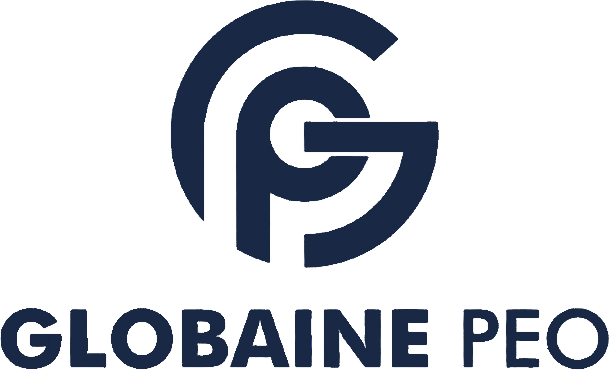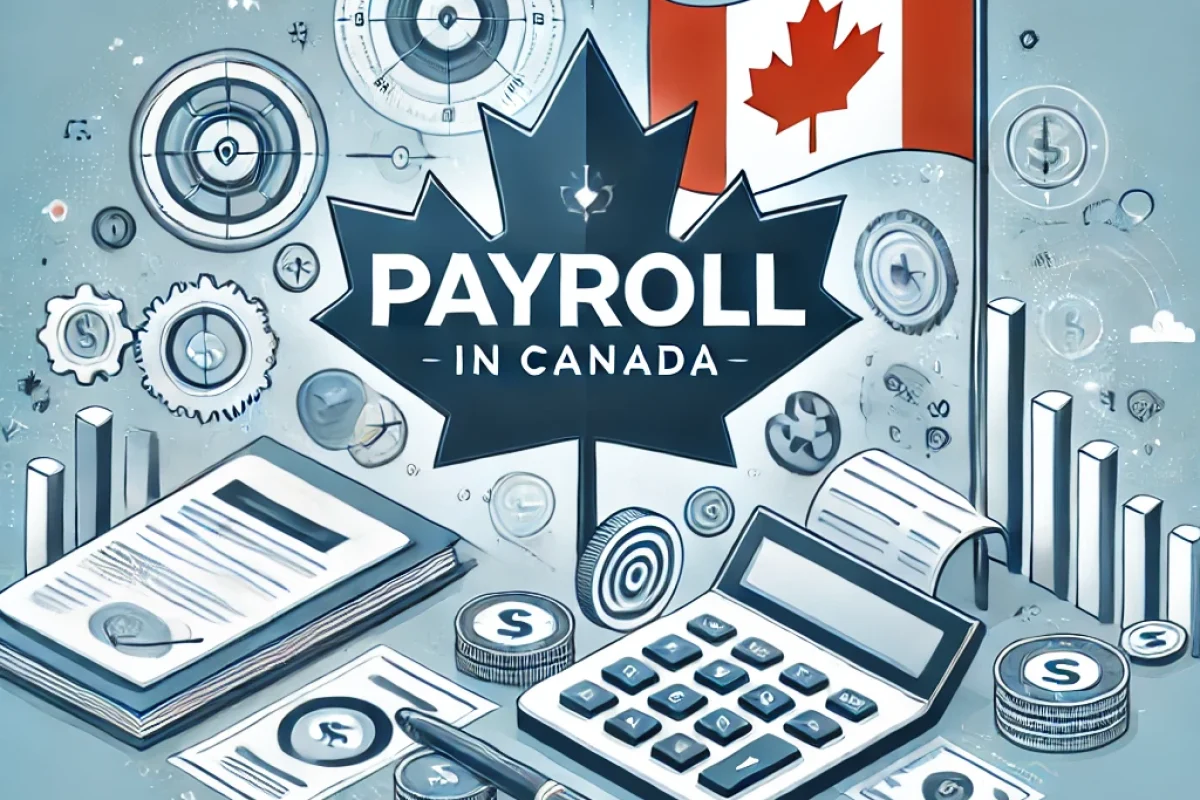Expanding into Canada offers tremendous growth opportunities for global employers, but managing payroll in Canada comes with its own set of challenges due to federal and provincial regulations. This guide breaks down the payroll process, tax obligations, and important considerations for managing Canadian payroll effectively.
Step-by-Step Guide to Payroll in Canada
Step 1: Understanding the Salary Structure in Canada 💰
The salary structure in Canada includes mandatory components such as wages and taxes, along with optional benefits, which may vary by employer.
| Component | Details | Mandatory/Optional |
|---|---|---|
| Base Salary | Fixed compensation for the employee’s work, as per the employment contract. | Mandatory |
| Bonuses | Performance-based or profit-sharing bonuses are common but depend on company policies. | Optional |
| Health Insurance | Many employers offer health insurance, with tax advantages for both employer and employee. | Optional (but common) |
| Retirement Benefits (RRSP) | Employer contributions to retirement plans such as RRSPs, providing tax benefits. | Optional |
| Meal Allowances | Can be offered as part of benefits package, with potential tax advantages for non-taxable limits. | Optional |
| Employment Insurance (EI) | Mandatory contributions to EI, providing financial assistance during unemployment. | Mandatory |
Outcome: Structuring salaries with mandatory contributions and optional benefits ensures compliance and competitive compensation.
Step 2: Income Tax Withholding 🧾
In Canada, employers are responsible for withholding federal and provincial income taxes based on information provided by employees on the appropriate forms.
| Annual Salary | Federal Tax Rate |
|---|---|
| Up to $53,359 | 15% |
| $53,359 – $106,717 | 20.5% |
| $106,717 – $165,430 | 26% |
| $165,430 – $235,675 | 29% |
| Above $235,675 | 33% |
Filing Requirement: Employers must submit tax withholdings to the Canada Revenue Agency (CRA) and provide employees with annual T4 slips to report their income.
Outcome: Proper income tax withholding ensures compliance with federal and provincial tax laws, reducing penalties and fines.
Step 3: Canada Pension Plan (CPP) Contributions 
Employers in Canada must contribute to the Canada Pension Plan (CPP), which provides retirement benefits for employees.
| Contribution Type | Employer Contribution (%) | Employee Contribution (%) |
|---|---|---|
| Canada Pension Plan (CPP) | 5.95% of pensionable earnings (2024 rate) | 5.95% of pensionable earnings (2024 rate) |
Note:
- Maximum Contribution: The maximum pensionable earnings are set annually, affecting how much can be contributed to CPP. For 2024, the maximum is $66,600, leading to a maximum contribution of $3,166.80 for both employer and employee.
- Age Considerations: Employees aged 18 to 70 are required to contribute, while those over 70 may choose to stop contributions.
Outcome: Timely and accurate CPP contributions ensure employees are covered for retirement benefits, avoiding compliance issues.
Step 4: Payroll for Non-Residents 🌍
Managing payroll for non-resident employees working in Canada involves additional considerations, including tax obligations and compliance with immigration regulations.
| Non-Resident Consideration | Details |
|---|---|
| Tax Residency | Non-residents may be subject to Canadian income tax on income earned in Canada. Tax treaties between Canada and the employee’s home country may affect withholding rates. |
| Payroll Tax Withholding | Employers must withhold the appropriate federal and provincial taxes from the non-resident’s income, typically at a flat rate. Non-residents are not eligible for certain deductions available to residents, such as the basic personal amount. |
| Employment Insurance (EI) | Non-residents working in Canada are usually required to contribute to EI if their employment qualifies, but they may be exempt from certain other contributions. |
| Work Permits | Employers must ensure non-residents have the appropriate work permits, as hiring without proper documentation can result in legal penalties. |
Outcome: Properly managing payroll for non-resident employees ensures compliance with Canadian tax laws and immigration requirements.
Step 5: Employment Insurance Contributions 📉
Employers in Canada must contribute to Employment Insurance (EI), which provides financial assistance to workers who lose their jobs.
| Insurance Type | Contribution |
|---|---|
| Employment Insurance (EI) | 1.58% of insurable earnings for employers (2024 rate) |
| 1.58% of insurable earnings for employees (2024 rate) |
Note: Employers benefit from an EI rate reduction program for businesses that create employment opportunities.
Outcome: Timely and accurate contributions ensure employees are covered for unemployment benefits, avoiding compliance issues.
Step 6: Paid Leave 🌴
In Canada, employees are entitled to various forms of paid leave, including vacation time and statutory holidays, which vary by province.
| Leave Type | Details |
|---|---|
| Vacation | Employees are entitled to a minimum of two weeks of paid vacation after completing one year of service. This increases with years of service. |
| Sick Leave | Sick leave policies vary by employer; some provinces mandate paid sick leave, while others do not. |
| Statutory Holidays | Employees are entitled to nine paid statutory holidays, with additional holidays varying by province. |
Outcome: Employers offering paid leave improve employee satisfaction and retention while staying compliant with provincial mandates.
Step 7: Health Insurance and Other Benefits 🏥
While health insurance is not mandated at the federal level, many employers offer it as part of their benefits package to attract talent.
| Benefit Type | Employer Requirement | Optional/Mandatory |
|---|---|---|
| Health Insurance | Not mandatory, but common | Optional (but common) |
| Retirement Contributions (RRSP) | Many employers offer matching contributions to employees’ retirement savings plans. | Optional |
| Meal Allowance | Employers can offer meal subsidies or vouchers as part of the benefits package. | Optional |
Outcome: Offering competitive health insurance and retirement benefits helps attract and retain top talent.
Step 8: Payroll Compliance and Reporting 📊
Employers in Canada are required to follow strict reporting guidelines for payroll.
| Compliance Requirement | Details |
|---|---|
| Monthly Remittances | Employers must remit payroll deductions to the CRA on a monthly basis. |
| T4 Slips | Must be provided to employees by the end of February, detailing their annual earnings and taxes withheld. |
| Record-Keeping | Employers must retain payroll records for at least six years for audit purposes. |
Outcome: Following payroll compliance and reporting guidelines avoids legal issues and keeps payroll processes running smoothly.
Step 9: Payroll for Remote Workers 💻
For remote workers, payroll compliance may vary depending on where the employee resides and works.
| Remote Worker Consideration | Details |
|---|---|
| Tax Residency | Employees may be subject to provincial income taxes based on their physical location, requiring adjustments to payroll processing. |
| EI Contributions | Remote workers are still subject to EI contributions if applicable. |
| Compliance with Provincial Laws | Each province has its own labor laws and regulations, which may affect payroll processing, benefits, and employee rights. |
Outcome: Accurately managing payroll for remote workers avoids compliance problems across different provincial tax jurisdictions.
Conclusion: How GlobainePEO Can Help with Payroll in Canada 🌐
GlobainePEO, as your Employer of Record (EOR), ensures compliance with Canadian payroll regulations, managing tax withholdings, CPP contributions, EI contributions, and employee benefits.
By partnering with GlobainePEO, global employers can focus on growing their business while we handle the complexities of payroll in Canada.

